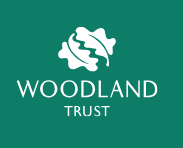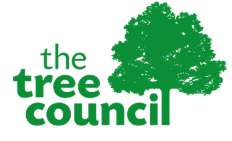Ash Dieback
- Ali Wood
- May 22
- 4 min read
WHAT IS IT?
Ash dieback is a serious fungal disease, detected in the UK back in 2012 it is now widespread. The fungus causes rapid or gradual crown dieback and can also attack the root collar of susceptible trees. A susceptible ash tree may take many or only a few years to eventually die depending on site conditions, as well as size and genetic make-up of the tree.
RISK TO BUILDINGS, HIGHWAYS AND PUBLIC
Dead or dying ash trees can pose a danger to highways, buildings as well as the general public. They are particularly hazardous as their deadwood can become very brittle and can break unexpectedly.
ASSESSING THE RISK
It is now considered if more than 50% of the leaf canopy has been lost, the tree needs to be removed if it poses a risk to highways, buildings or the public. If you think you have ash trees on your land and want help assessing the risks clink the links at the end of this blog for more info, or give us a call. Because of the risk they pose, they need to be removed mechanically using specialist equipment.
HOW CAN WE HELP
We offer professional tree services, expertise and advice.
Tree health assessment
Green asset damage evaluation
Remedial tree safety works
Specialised equipment for the mechanical removal of hazardous trees
Ongoing threat monitoring
Tree stock replanting planning & delivery
ACTION PLAN
If you think you have affected ash trees
Identify – Confirm that the tree is indeed a native Ash -Fraxinus excelsior. This guide will help you identify an Ash and the percentage of dieback.
Assess the leaf canopy in June (Ash are one of the last trees to sprout leaves in Spring). If it seems full, it's worth taking a couple of photos to compare with for the future. Dieback can happen during the growing season, with leaves wilting and falling, leaving exposed branches.
If it looks like less than 50% canopy or if you have any concerns – ask a professional to have a look and suggest action.
F A Qs
HOW CAN I TELL IF A TREE HAS BEEN AFFECTED?
This is a handy guide to making that assessment yourself. [LINK] Ash are one of the latest to sprout their leaves in Spring so June is a good time to assess the current canopy of Ash trees.
CAN AN ASH TREE RECOVER?
There appears to be no cure for Ash Dieback, however some trees, appear to be more resistant than others. Some trees succumb very quickly, while others may take many successive years to reach the same point. (The fungus spores re-infect the tree every year.) Dieback happens during the growing season, with leaves wilting and falling, leaving exposed branches. It is estimated that 80% of ash trees will eventually die.
We offer a monitoring service to re-assess trees for progression of the infection, and offer appropriate action for the condition of the tree.
WHAT TO DO WITH AN ASH TREE IN A PUBLIC SPACE?
Mature trees provide significant ecosystem service value and wherever possible should be retained. Solutions should always be site specific but can include crown reduction, exclusion zones, pollarding, and veteranisation. Unfortunately, in areas where they pose a danger to the public or property, trees may require full removal, or coppicing.
SHOULD I REPLANT?
If you have an Ash tree removed, do consider re-planting with a selection of different trees. Habitat has been lost, and while on an individual scale this may not appear to have impact, given that an estimated 60 million trees will be affected, the compound loss of habitat for native birds, insects and animals is significant, especially in the wooded areas of Cumbria.
WILL ASH DIEBACK KILL EVERY ASH TREE?
No, but estimates indicate 80% of Britain’s ash trees will suffer mortality as a result of Dieback. This will cause significant changes in the woody landscape, particularly in regions with many ash trees like Cumbria.
WHY DOES ASH DIEBACK MAKE TREES DANGEROUS?
The Ash Dieback fungus blocks water transport causing partial or total mortality in infected specimens. Vasculature failure leads to structural defects within tree canopy and stems, eventually causing the failure of individual limbs or even entire specimens. Distinct basal lesions are a clear warning sign that trees are at risk of total failure.
HOW DOES ASH DIEBACK SPREAD?
The fungus overwinters on leaf litter then produces fruiting spores between July and October. These spores then travel by wind landing on and infecting the leaves of living ash trees. Even if a tree survives the first infection it is likely to simply be infected again during the Spring.
DOES IT AFFECT ME?
If you are a UK landowner with native Ash trees (Fraxinus excelsior) on your land then Dieback is likely to affect you. If this land is publicly accessible or specimens overhang public areas, or pose risk to property or highways, then the landowner is responsible for ensuring these trees do not pose unreasonable risk. If your tree or one of its branches causes harm or damage, you may be liable.
MORE INFO CAN BE FOUND HERE:

























Comments